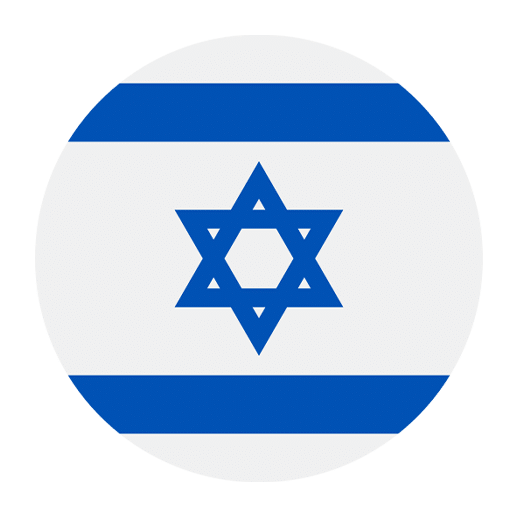Learning a new language can be a thrilling and enriching experience, particularly when you delve into the nuances and intricacies of how different concepts are expressed. One area of interest for many language learners is understanding how abstract nouns are formed and used in various languages. In Hebrew, abstract nouns are crafted in unique ways, often involving specific patterns and morphological structures. This article aims to provide a comprehensive guide to understanding the formation and usage of abstract nouns in Hebrew, which will be particularly beneficial for English speakers looking to deepen their knowledge of this fascinating language.
Understanding Abstract Nouns
Before we dive into the specifics of Hebrew, it’s essential to have a clear understanding of what abstract nouns are. Abstract nouns represent ideas, qualities, or states rather than concrete objects. Examples in English include “love,” “freedom,” “happiness,” and “strength.” Unlike concrete nouns, which you can see or touch, abstract nouns are intangible and often convey concepts, emotions, or conditions.
Formation of Abstract Nouns in Hebrew
In Hebrew, abstract nouns are typically formed using specific patterns and morphological structures that are applied to root words. Hebrew is a Semitic language, and one of its distinctive features is its root-based system, where words are formed from a sequence of consonants called roots. These roots can be combined with various prefixes, suffixes, and infixes to create different meanings and parts of speech.
Common Patterns for Abstract Nouns
Several patterns are commonly used to form abstract nouns in Hebrew. Here are a few of the most prevalent ones:
1. The -ות (ut) Suffix:
One of the most common ways to form abstract nouns in Hebrew is by adding the suffix -ות (ut) to a root or base word. This pattern is similar to adding “-ness” or “-ity” in English. For example:
– טוב (tov) – “good” becomes טובוּת (tovut) – “goodness”
– חכם (chacham) – “wise” becomes חָכמָה (chokhma) – “wisdom”
2. The -ון (on) Suffix:
Another common suffix is -ון (on), which is often used to create nouns that denote states or conditions. For example:
– עצוב (atzuv) – “sad” becomes עצבוּן (atzvun) – “sadness”
– יָשָר (yashar) – “straight” or “honest” becomes יָשָרוּן (yasharun) – “honesty”
3. The -יה (iya) Suffix:
The suffix -יה (iya) is frequently used to form nouns that describe qualities or abstract concepts. For example:
– חדש (chadash) – “new” becomes חָדשׁוּת (chadashut) – “novelty” or “newness”
– עצמאות (atzmaut) – “independence” derived from עָצמָה (atzma) – “strength”
4. The -ות (ut) Suffix:
In addition to the general -ות (ut) suffix, there are specific versions that apply to certain roots, particularly those that indicate actions or states. For example:
– עָיֵיף (ayef) – “tired” becomes עָיֵיפוּת (ayefut) – “tiredness”
– עָצוּב (atzuv) – “sad” becomes עָצוּבוּת (atzvut) – “sadness”
Root Patterns (Mishkalim)
In Hebrew, roots are typically three consonants (though they can sometimes be two or four). The roots are inserted into different patterns, known as mishkalim, which can denote various meanings, including abstract nouns. Here are a few common mishkalim used for abstract nouns:
1. קְטַלָה (ketala) Pattern:
This pattern is often used to form nouns related to actions or processes. For example:
– לָמַד (lamad) – “to learn” becomes לִמּוּד (limmud) – “learning” or “study”
– שָמַע (shama) – “to hear” becomes שְמִיעָה (sh’miya) – “hearing”
2. קְטִילוּת (ketilut) Pattern:
This pattern is used for nouns that describe states or qualities. For example:
– רָעֵב (ra’ev) – “hungry” becomes רְעֵבוּת (re’evut) – “hunger”
– נָקִי (naki) – “clean” becomes נְקִיוּת (nekiyut) – “cleanliness”
3. קְטָלוֹן (ketalon) Pattern:
This pattern often denotes conditions or states. For example:
– חָפֵץ (chafetz) – “to desire” becomes חֵפֶץ (chefetz) – “desire” or “wish”
– בּוֹש (bosh) – “to be ashamed” becomes בּוּשָה (busha) – “shame”
Usage of Abstract Nouns in Hebrew
Now that we have an understanding of how abstract nouns are formed in Hebrew, let’s explore how they are used in sentences. Abstract nouns in Hebrew function similarly to their English counterparts but can be employed in unique ways due to the structure and grammar of the Hebrew language.
Subject of a Sentence
Abstract nouns can serve as the subject of a sentence, just like in English. For example:
– חָכמָה (chokhma) – “Wisdom is valuable.” (חָכמָה יְקָרָה)
– אהבה (ahava) – “Love conquers all.” (אַהֲבָה מְנַצַּחַת כֻּלָּם)
Object of a Sentence
Abstract nouns can also be the object of a sentence. For example:
– אני מעריך את האמת. (Ani me’arikh et haemet.) – “I appreciate the truth.”
– היא מחפשת צדק. (Hi mekhapeset tzedek.) – “She seeks justice.”
With Prepositions
Abstract nouns in Hebrew are frequently used with prepositions to convey more complex ideas. For example:
– בשלום (b’shalom) – “in peace”
– מתוך אהבה (mitokh ahava) – “out of love”
– ללא פחד (lelo pachad) – “without fear”
Possessive Form
When expressing possession with abstract nouns, Hebrew uses the construct state (smikhut). For example:
– חוכמת המלך (chokhmat hamelech) – “the king’s wisdom”
– תקוות העם (tikvat ha’am) – “the people’s hope”
Idiomatic Expressions
Abstract nouns are also commonly found in idiomatic expressions and proverbs in Hebrew. These expressions often encapsulate cultural wisdom and values. For example:
– חוכמה בגויים תאמין (Chokhma b’Goyim ta’amin) – “Wisdom among the nations, believe it.”
– אין שמחה אלא בשמחה (Ein simcha ela b’simcha) – “There is no joy but in joy.”
Collocations
Certain abstract nouns frequently appear in fixed collocations with other words, creating phrases that are commonly understood by native speakers. For example:
– עולָם הַחֵרוּת (olam ha’cherut) – “the world of freedom”
– כבוד האדם (kavod ha’adam) – “human dignity”
Challenges and Tips for Learning Abstract Nouns in Hebrew
Learning abstract nouns in Hebrew presents some unique challenges, but with the right strategies, you can master their formation and usage.
Memorizing Patterns and Suffixes
One of the most effective ways to learn abstract nouns is to familiarize yourself with the common patterns and suffixes. Creating flashcards or using language learning apps that focus on these structures can be incredibly helpful.
Contextual Learning
Abstract nouns often make more sense when learned in context. Reading Hebrew literature, newspapers, or listening to Hebrew media can provide valuable exposure to how these nouns are used naturally.
Practice with Native Speakers
Engaging in conversations with native Hebrew speakers can enhance your understanding and usage of abstract nouns. Try to incorporate new abstract nouns into your discussions to reinforce your learning.
Use Mnemonics
Creating mnemonic devices or associations for abstract nouns and their patterns can aid in retention and recall. For example, linking the sound of a word to its meaning or creating a visual image can be beneficial.
Regular Review
Consistent review is key to mastering any aspect of language learning. Regularly revisit abstract nouns and their patterns to ensure they remain fresh in your memory.
Conclusion
Understanding and using abstract nouns in Hebrew can significantly enhance your language proficiency and deepen your appreciation for the language’s richness. By learning the common patterns and suffixes, practicing in context, and engaging with native speakers, you can effectively master the formation and usage of abstract nouns. As you continue your Hebrew language journey, these abstract nouns will become an integral part of your vocabulary, allowing you to express complex ideas and emotions with greater precision and nuance. Happy learning!

